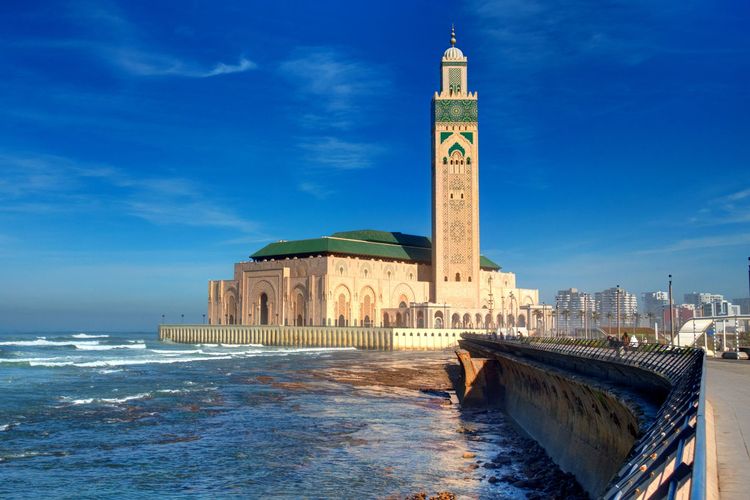The modern hammam is generally built in marble or stone and has two main areas: the hammam and the pool. This combination of hot and cold improves circulation, boosts immunity and provides great physical relaxation.
The hammam is an experience that promotes physical and mental well-being. It has been used for centuries to relax muscles, as well as for its therapeutic benefits. Indeed, this ritual is reputed to detoxify the body and cleanse the skin. The origins of the hammam date back to ancient times, when the Greeks and Romans used it as a place for social interaction, bathing rituals and relaxation. In the Middle Ages, the practice became an important part of Islamic culture. With the spread of Islam, the hammam quickly became one of the pillars of Muslim tradition, as it facilitated both small and large purifying ablutions. Over time, it was annexed to mosques in different parts of the city. Even today, this is a very popular practice in the Maghreb: in Casablanca, you can find more than 1,000 of them! Give this ancient ritual a try and take a wellness break!

Hammam de la mosquée Hassan II
- © Cezary Wojtkowski / ShutterstockThe benefits of the hammam
Hammams are also a complete beauty treatment for the skin, detoxifying it. The heat of the hammam allows sweat to open the pores, freeing dirt from the skin (blackheads, etc.). This is followed by a cold shower to close the pores and preserve the body's natural oils. Whether used in its traditional form or incorporated into spa treatments, the hammam is always beneficial to health.
Which hammam to choose in Casablanca?
If you're looking for a hammam, we recommend you opt for the most traditional of them all: the Hassan II mosque's very modern hammam, which opened its doors in 2019. Considered to be the largest in the world, the mosque's hammam invites visitors to enjoy its communal baths in two separate rooms. One for women and the other for men.

Hammam de la mosquée Hassan II
- © PrakichTreetasayuth / ShutterstockHere, you will experience all the stages of a traditional hammam, with one exception: a superb bathing area, consisting of a large 300 m3 immersion basin, is supplied with heated seawater. In this way, the tradition of Moorish baths (relaxation area, layout) is combined with a balneotherapy service (seawater, health bath, etc.).
How does the ritual work?
After paying the modest sum of 4 euros (50 dirhams) for admission, you must undress (keeping your pants or shorts on) and wrap yourself in a towel. You will be given a pitcher to pour the water into and a piece of oilcloth to sit on in the hammam.
As in most hammams in Morocco, you can choose between three rooms heated to different temperatures. If you like heat and humidity, opt for the back room. For 30 minutes (or even longer: there's no time limit), you can relax on your piece of canvas, smearing yourself with black soap (scented with olive oil, eucalyptus or rose), before rinsing off with buckets of water.
You can stop there, but we advise you to take options for three very relaxing services: the scrub, the massage, and the immersion in the health bath. The scrub/massage is often quite invigorating, depending on the strength of the professional wielding the Kessa glove. All your dead skin will be removed, and your skin will regain its radiance.
Where to stay near the Hassan II Mosque Hammam?
 Casablanca
Casablanca
Casa Marina Casablanca
A comfortable flat with sea views near the Hassan II mosquePractical information
👛 Prices: the entry-level price has been set at 50 DH (4.5 euros) for traditional hammams. The price can go up to 450 DH (40 euros), depending on the additional services requested.
Simple access to the 'health bath' costs 150 DH (13.5 euros). For this price, customers have access to the heated seawater pool and the use of the aquatic circuit using the various pool facilities, as well as the relaxation and rest areas located around the pools.
⏰ Opening times: open 7 days a week, from 8am to 11pm. Last entry at 9.30pm.






